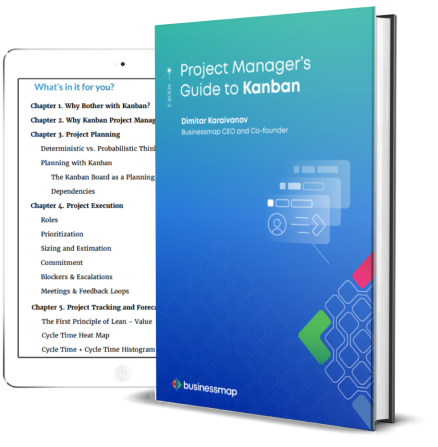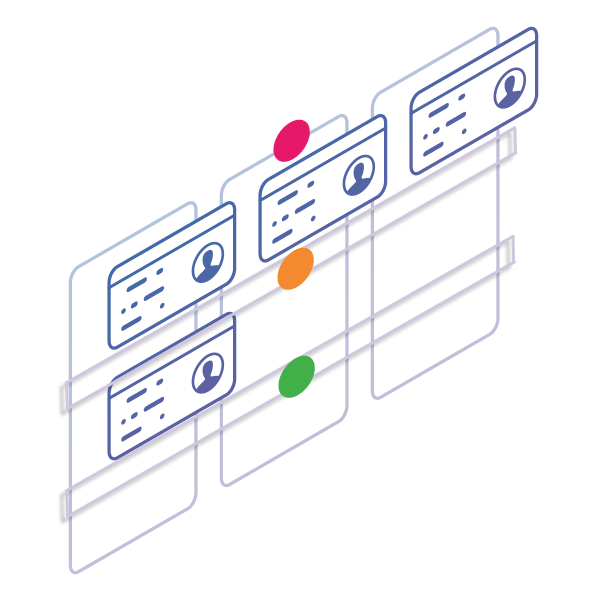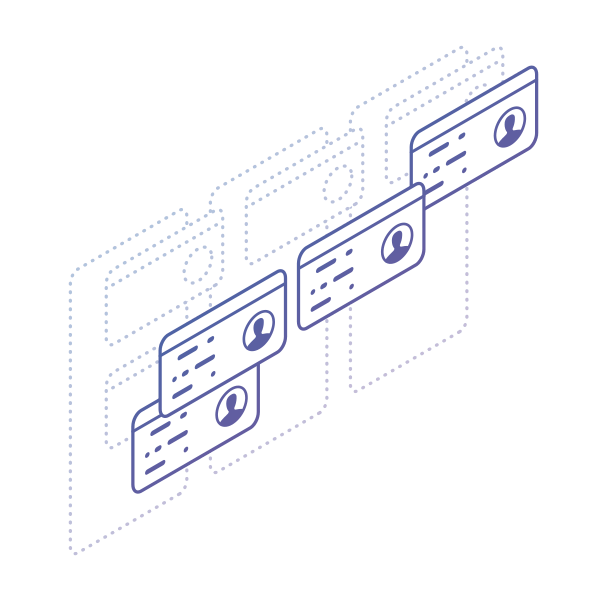In short, limiting work-in-progress with Kanban encourages higher quality and improved delivery performance. The act of restricting WIP helps you optimize work capacity by allowing you to pull new work only if capacity is available.
Let’s dig deeper and define the WIP limit, its benefits, and how to limit the work in progress in your process.
Definition of WIP
The acronym WIP stands for Work In Progress. WIP is the number of task items that a team is currently working on. It frames the capacity of your team's workflow at any moment.
 Limiting work in progress on a kanban board
Limiting work in progress on a kanban board
Limiting work in progress is one of Kanban's core properties. It allows agile organizations to manage their processes in a way that creates a smooth workflow and prevents overloads.
Why Do Agile Teams Use WIP Limits? (and You Should Too)
Work in progress (WIP) limits restrict the maximum number of work items in the workflow's different stages (kanban board columns). They can be defined per person, per work stages/type, or for the entire work system. Implementing WIP limits allows you to complete single work items faster by ensuring your team focuses on finishing current tasks before starting new ones.
Most importantly, by applying WIP limits, agile teams can easily identify bottlenecks in their working processes before they become blockers.
WIP limits are considered an important prerequisite for delivering value to customers as quickly as possible, making them a valuable asset of the Kanban method.
Furthermore, according to the latest State of Kanban report, limiting work in progress is one of the most utilized Kanban practices.
 Image Credit: State of Kanban
Image Credit: State of Kanban
How to Set Up Kanban WIP Limits?
The work in progress limits have to be adjusted when necessary. There isn't a predetermined formula that will tell you how to calculate WIP limits to set up an optimal number. However, the following four best practices can help you get started.
1. Hold Regular Review Meetings
Review how you deliver your services on a team level and consider how work items are aging on your board. You can do this during a team Kanban retrospective meeting.
2. Embrace Changes of the WIP Limits
Be ready to make changes. Remember that your workflow will be changing dynamically because it is not an isolated system.
3. Continuously Analyze Your Workflow
Monitor your team's workflow regularly and control how you limit WIP depending on ever-changing factors such as new business requirements, customer demands, team size and capacity, unexpected technical issues, etc.
For these purposes, capable kanban software solutions are equipped with powerful data analytical capabilities. As such, kanban metrics enable you to analyze essential information regarding your team's workflow.
4. Aim Not to Exceed the WIP Limits of Your Workflow
To ensure that the kanban system will work for your team, try to respect the limits you configured. It's a good practice not to exceed WIP limits unless you have a good reason for that (ex. an urgent task that comes with a higher priority). It’s also wise to provide an indication (ex. the top of a kanban board’s column turns red) and a reason whenever that happens so your team can immediately see what’s currently happening with the workflow.
 Visualization of Exceeded WIP limit on a kanban board
Visualization of Exceeded WIP limit on a kanban board
Otherwise, you will miss the point of creating a smooth workflow and increasing your team's efficiency. This is why it is important to make sure that your team understands the essential Kanban principles and practices.
Naturally, you will set WIP limits according to your team's current work capacity. However, once you set them, you need to observe the work process and adjust the limits if needed. After all, every workflow is dynamically changing, and it needs continuous improvement.
5 Most Common Ways to Use WIP Limits
As processes evolve over time, workflows naturally become more complex. When this happens, teams may find themselves in a challenging situation where they struggle to manage new work items entering the system without finishing the ones in progress.
To handle this situation, you can set WIP limits to various workflow components, not only to a single column. This will help you keep the process smooth and stable and protect your team members from multitasking and overburdening.
To clarify this, let’s review some common use cases of work-in-progress limits configurations that you can use when your processes gradually mature.
1. Establishing WIP Limits Per Person
Applying WIP limits per person is a good practice to protect each team member from working on multiple assignments at a time. By setting WIP limits per user, you’re limiting the number of work items that can be in progress for everyone on the team.
Before defining the WIP limits, it is required to consider two things: first, the size of the work items that team members work on, and second, how many work items a person can finish for a predefined period. The latter helps in calculating the optimal number of WIP limits for every individual.
For example, if a worker can complete 5 work items for a week, then his WIP limit should be 5.
That was the case with Aerosud's IT team, which transformed its workflow by calculating the optimal number of WIP limits. After training and implementing WIP limits, they quickly realized the impact of reducing high Work-In-Progress levels for every individual. As a result, they doubled their throughput from 60 to 120 tickets in just three days!
 Setting WIP limits per user
Setting WIP limits per user
2. Establishing WIP Limits Per Team
Setting team-based WIP limits can help you reduce the risk of your team switching between work and getting overburdened. Instead, introducing WIP limits keeps them focused on the work at hand and improves team collaboration.
For those who already use a digital solution, configuring team WIP limits can be based on historical data. This way, you can observe your team's weekly throughput and use it as your team WIP limit.
Take this, for example: if a team completes 10 work items per week, set 10 as the team WIP limit.
3. Establishing CONWIP Limits
CONWIP limits, or constant WIP limits, refer to setting a constant limit to the total amount of work in progress. Regardless of the number of sub-columns in each stage of your process, this limit applies to the entire column. In other words, if the "In Progress" column in your workflow is divided into three sub-columns, the CONWIP limit refers to the total number of allowed work items for all three sub-columns.
 Illustration of CONWIP limit on a kanban board
Illustration of CONWIP limit on a kanban board
4. Establishing Activity-Based WIP Limits
Another way to manage team capacity is by limiting the work in progress based on a specific work type (e.g. bugs, customer requests, product features, etc.). It involves setting an upper limit on the number of work items of a particular type that can be simultaneously in progress.
5. Establishing Upstream WIP Limits
Introducing WIP limits to the upstream workflow process keeps the flow steady and ensures a consistent stream of new ideas ready to be executed next. Implementing WIP limits to an upstream process allows to manage more effectively the number of work items committed to delivery, prevents overburdening, and represents the actual capacity of the upstream process. Other than that, it ensures a sufficient number of fresh ideas ready to be replenished as soon as the limit is reached.
 Setting a maximum limit on the work items in the upstream process of a workflow
Setting a maximum limit on the work items in the upstream process of a workflow
The optimal WIP limit configuration can vary based on various factors such as team capacity, work requirements, process structure, and business scenarios. Regular checkups are an ideal opportunity to monitor the impact of your system’s WIP limits. By doing so, you can adjust them when needed and maintain an efficient workflow.
What Are the Benefits of Using WIP Limits?
Let's go over why limiting work in progress is one of the main practices in the Kanban method that make it so efficient for proper work delivery.
Keep Optimal Work Pace
Kanban WIP limits help your team keep an optimal work pace without exceeding its work capacity.
In the context of kanban boards, the WIP limit is the gatekeeper that makes sure you start only as much work as you finish throughout the organization. This prevents the accumulation of unfinished work, which can otherwise flood your processes.
 Configured WIP limits on a kanban board
Configured WIP limits on a kanban board
Reveal Process Blockers
Additionally, applying WIP limits on your kanban board will help you reveal work process blockers and prevent team members from regular context switching between tasks. These steps will have a positive impact on your flow efficiency and will improve your team's productivity.
 Exposing process bottlenecks through a WIP limit on a column level
Exposing process bottlenecks through a WIP limit on a column level
Prevent Multitasking
In a team of two, limiting work in progress to one task per person would prevent context-switching and immediately reveal the difference in throughput rates.
In such a case, exceeded limits would signal the need to review the process and potentially look for ways to increase capacity in the heavier work stage.
Deliver Value Faster
By limiting work in your system and refining based on real-time observations, you’re showcasing a commitment to continuous improvement. Adding WIP limits accelerates the completion of active tasks, reducing waste in your process. With fewer tasks clogging your system, real customer value is delivered more swiftly.
Limiting WIP speeds up your processes and boosts your delivery rate (throughput), ensuring you consistently meet or exceed customer expectations. Take the Flapper use case, for instance. By managing their high average WIP of 80 items per week with strategic policies, they quickly reduced inefficiencies. The result? A leaner, faster, and more efficient workflow.
10 Years Kanban Experience In 1 Free Book.
Project Manager's Guide to Kanban
The WIP Limits Paradox
Having too high WIP limits means that your team is probably working on multiple tasks, switching contexts all the time, and not meeting the deadlines. Having low limits, on the other hand, means that when a given item is pending on a third party, your members have to wait, i.e., they are idle.
What these two scenarios have in common is that your team is unproductive and inefficient. To escape this paradox, carefully monitor your KPIs when you increase or decrease your limits. If you change your team's WIP limits and your KPIs go the opposite way, then you're probably a victim of the paradox and must examine your team's operations closer to ensure smoother flow.
The Practice of Limiting WIP in a Nutshell
WIP limits are an ideal way to build a pull system. Also, their adequate application is what sets apart the efficient use of Kanban for project management.
There isn't a strict way to set your limits. It is a journey to achieve excellence. Setting the right WIP limits is part of the continuous improvement process. They change over time when members join or leave the team, along with other variable factors like efficiency. Be honest about your limits when you must change them.
While we cannot provide an exact number without having detailed knowledge of your teams' workflows, a common starting point is to limit the number of work items in progress to a number equal to the number of team members +1. For example, if you have a team of 5 members, you could start with a WIP limit of 6.
Businessmap is the most flexible software
to align work with company goals
In Summary
Applying WIP limits allows you to create a smooth workflow and use team’s work capacity at optimal levels by:
- Preventing overloading of your work processes
- Helping to locate blockers and to alleviate bottlenecks in your workflow
- Giving you the opportunity to deliver value to end customers as fast as possible
- Preventing a constant context switching between work items





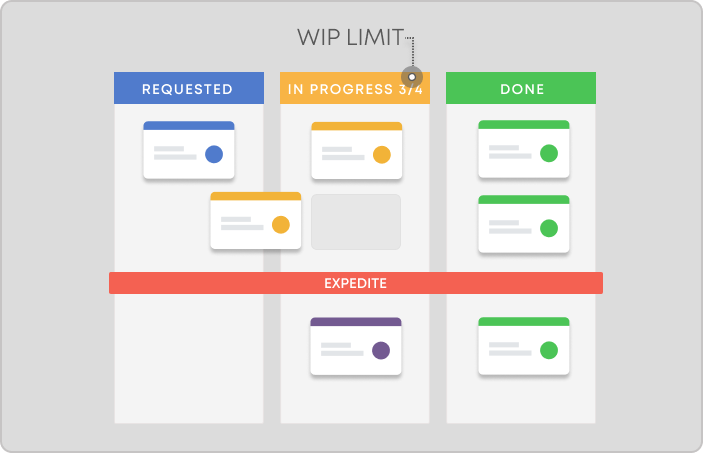 Limiting work in progress on a kanban board
Limiting work in progress on a kanban board Image Credit: State of Kanban
Image Credit: State of Kanban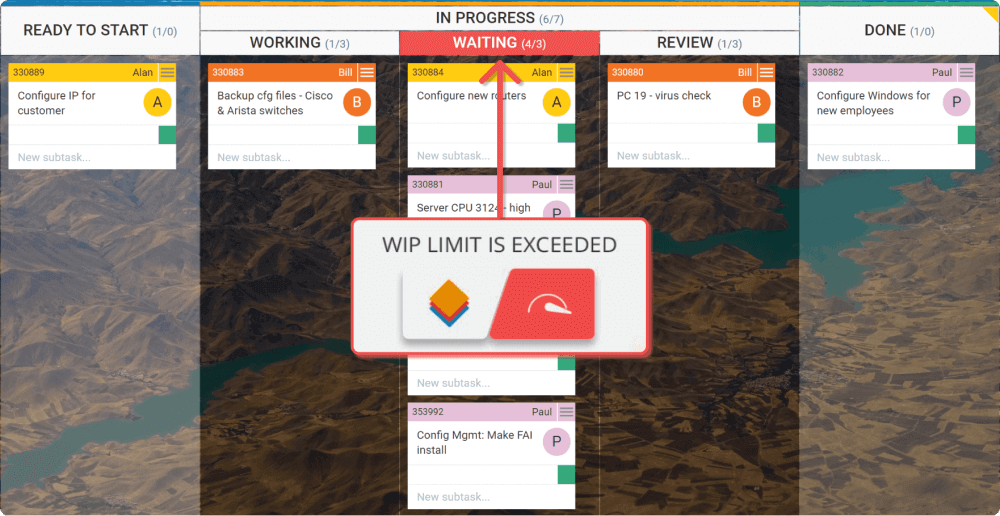 Visualization of Exceeded WIP limit on a kanban board
Visualization of Exceeded WIP limit on a kanban board Setting WIP limits per user
Setting WIP limits per user  Illustration of CONWIP limit on a kanban board
Illustration of CONWIP limit on a kanban board  Setting a maximum limit on the work items in the upstream process of a workflow
Setting a maximum limit on the work items in the upstream process of a workflow  Configured WIP limits on a kanban board
Configured WIP limits on a kanban board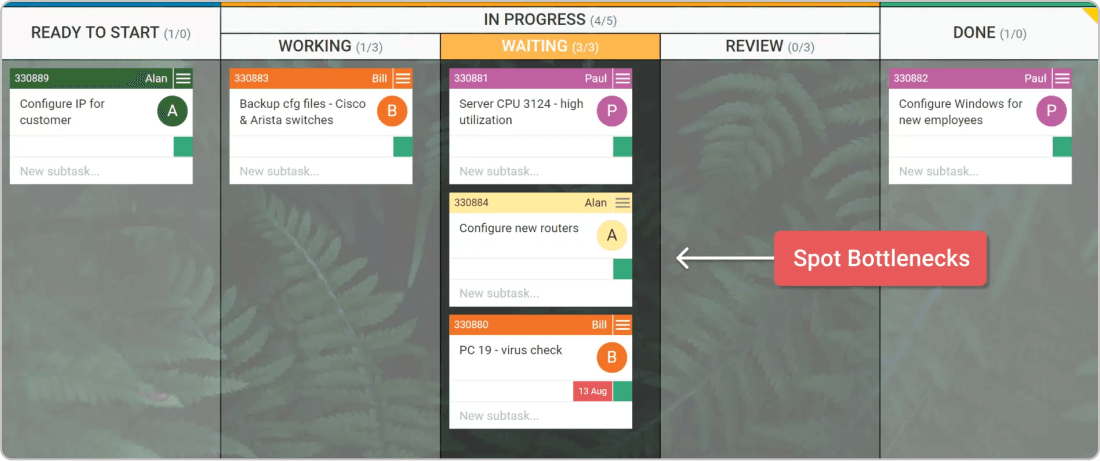 Exposing process bottlenecks through a WIP limit on a column level
Exposing process bottlenecks through a WIP limit on a column level